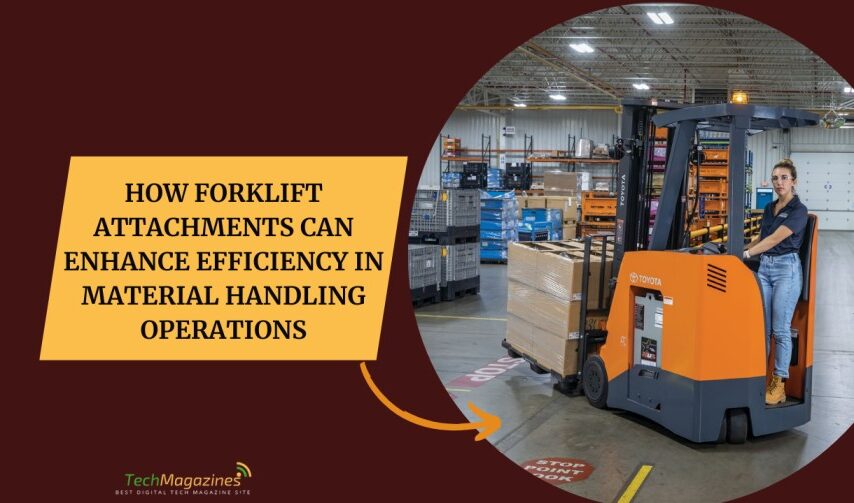Forklifts are indispensable in warehouses, distribution centers, and industrial sites, but their functionality extends beyond simple lifting and transporting of pallets. The use of specialized forklift attachments can significantly improve efficiency, enhance safety, and expand the range of applications for material handling. By equipping forklifts with the right attachments, businesses can optimize their operations, reduce manual labor, and increase productivity. Understanding the different types of forklift attachments and their specific benefits can help organizations maximize the value of their equipment investments.
The Role of Forklift Attachments in Modern Warehousing
Standard forklifts are designed for lifting, carrying, and stacking pallets, but many material handling tasks require specialized handling solutions. Forklift attachments allow operators to handle unique loads more efficiently, minimize product damage, and streamline operations.
1. Benefits of Using Forklift Attachments
- Increased Efficiency: Attachments reduce the need for manual repositioning and handling, speeding up workflow.
- Enhanced Safety: Secure handling of fragile or oddly shaped loads minimizes the risk of accidents.
- Versatility in Operations: Attachments make it possible to handle a wider variety of loads, reducing the need for multiple types of forklifts.
- Cost Savings: Reducing damage to products and improving handling efficiency translates into long-term financial savings.
By integrating the right attachments into their fleet, businesses can optimize both time and resources, ensuring that their forklifts are used to their full potential.
Common Types of Forklift Attachments
Forklift attachments come in various designs, each tailored for specific applications. Choosing the right attachment depends on the type of materials handled and the specific challenges faced in warehouse or industrial settings.
1. Side Shifters
- Allow lateral movement of the forks without moving the entire forklift.
- Improve load positioning, especially in confined spaces.
- Reduce the need for repositioning, enhancing productivity.
2. Fork Positioners
- Enable automatic adjustment of fork spacing to accommodate different load sizes.
- Minimize manual fork adjustments, reducing strain on operators.
- Improve efficiency in handling mixed-size pallets.
3. Rotators
- Allow forks to rotate loads up to 360 degrees.
- Useful in industries requiring dumping of materials, such as waste management and agriculture.
- Reduce manual unloading efforts, speeding up workflows.
4. Clamps (Paper Roll, Carton, Bale Clamps)
- Secure loads without the need for traditional pallets.
- Ideal for handling rolls of paper, cardboard boxes, or textiles.
- Reduce reliance on palletized shipments, saving storage space.
5. Push-Pulls
- Designed for slip-sheet handling, eliminating the need for pallets.
- Commonly used in food and beverage distribution to improve load transfer efficiency.
- Help reduce costs associated with purchasing and maintaining pallets.
6. Multiple Load Handlers
- Allow forklifts to carry two or more loads simultaneously.
- Ideal for beverage and warehouse operations where rapid movement of bulk items is required.
- Reduce travel time and increase loading/unloading speed.
Each of these attachments enhances forklift capability and reduces manual intervention, ultimately leading to improved operational efficiency.
Selecting the Right Forklift Attachments
Choosing the best forklift attachment depends on factors such as load type, warehouse layout, and operational requirements. Businesses should evaluate the following before making a selection:
1. Type of Load Handled
- Fragile goods: Require clamps with rubberized grips to prevent damage.
- Large or bulky items: Side shifters and fork positioners ensure stability.
- Loose materials: Rotators or bucket attachments help manage materials efficiently.
2. Frequency of Use
- Occasional use: Removable attachments may be more practical.
- Daily or high-frequency use: Fixed attachments improve workflow and reduce handling time.
3. Warehouse Space and Aisle Width
- Narrow aisles may require compact attachments like side shifters.
- Wide spaces allow for bulk-handling attachments such as multiple load handlers.
4. Forklift Load Capacity
- Attachments add weight to the forklift, reducing its lifting capacity.
- Operators must ensure the combined weight of the attachment and load does not exceed the forklift’s maximum capacity.
Operational Benefits of Forklift Attachments
Using attachments can lead to direct improvements in warehouse efficiency, safety, and cost savings. Below are the key operational benefits businesses can expect:
1. Enhanced Productivity
- Attachments reduce manual adjustments, allowing for faster load handling.
- Multiple load handlers enable the movement of several units at once, cutting down transit time.
2. Improved Safety
- Clamps and positioners ensure secure lifting, preventing accidents caused by slipping or falling loads.
- Side shifters reduce the need for excessive maneuvering, lowering the risk of forklift collisions.
3. Reduced Product Damage
- Attachments designed for delicate or oddly shaped items minimize breakage.
- Proper load handling reduces returns and replacement costs.
4. Lower Operational Costs
- Forklifts equipped with efficient attachments complete tasks faster, reducing fuel and labor costs.
- Eliminating unnecessary pallet usage with slip-sheet attachments can save businesses significant expenses over time.
Forklift Attachment Maintenance and Safety Considerations
Like forklifts, attachments require regular maintenance to ensure safe operation and longevity. Businesses must incorporate attachment care into their overall equipment maintenance plan.
1. Regular Inspection of Attachments
- Check hydraulic connections and moving parts for signs of wear.
- Ensure forks and clamps are properly aligned and secure.
- Look for leaks in hydraulic-powered attachments that could affect performance.
2. Operator Training and Certification
- Operators should receive specialized training on how to use attachments safely.
- Understanding weight distribution and load capacity prevents tipping hazards.
- Training reduces the risk of misuse, prolonging the lifespan of both forklifts and attachments.
3. Proper Storage and Handling
- When not in use, attachments should be stored in designated areas to prevent damage.
- Operators should be trained to switch attachments safely, ensuring secure connection before operation.
Final Thoughts: Maximizing Forklift Efficiency with Attachments
Optimizing forklift operations goes beyond selecting the right vehicle—it requires investing in the right attachments to maximize efficiency and safety. Businesses that implement the appropriate attachments for their material handling needs can improve productivity, reduce costs, and minimize product damage. Tri-Lift Industries helps companies identify the best forklift attachments for their operational requirements, ensuring they make strategic investments that enhance workflow efficiency. By evaluating factors such as load type, warehouse conditions, and long-term business goals, companies can make informed decisions that positively impact their bottom line.








